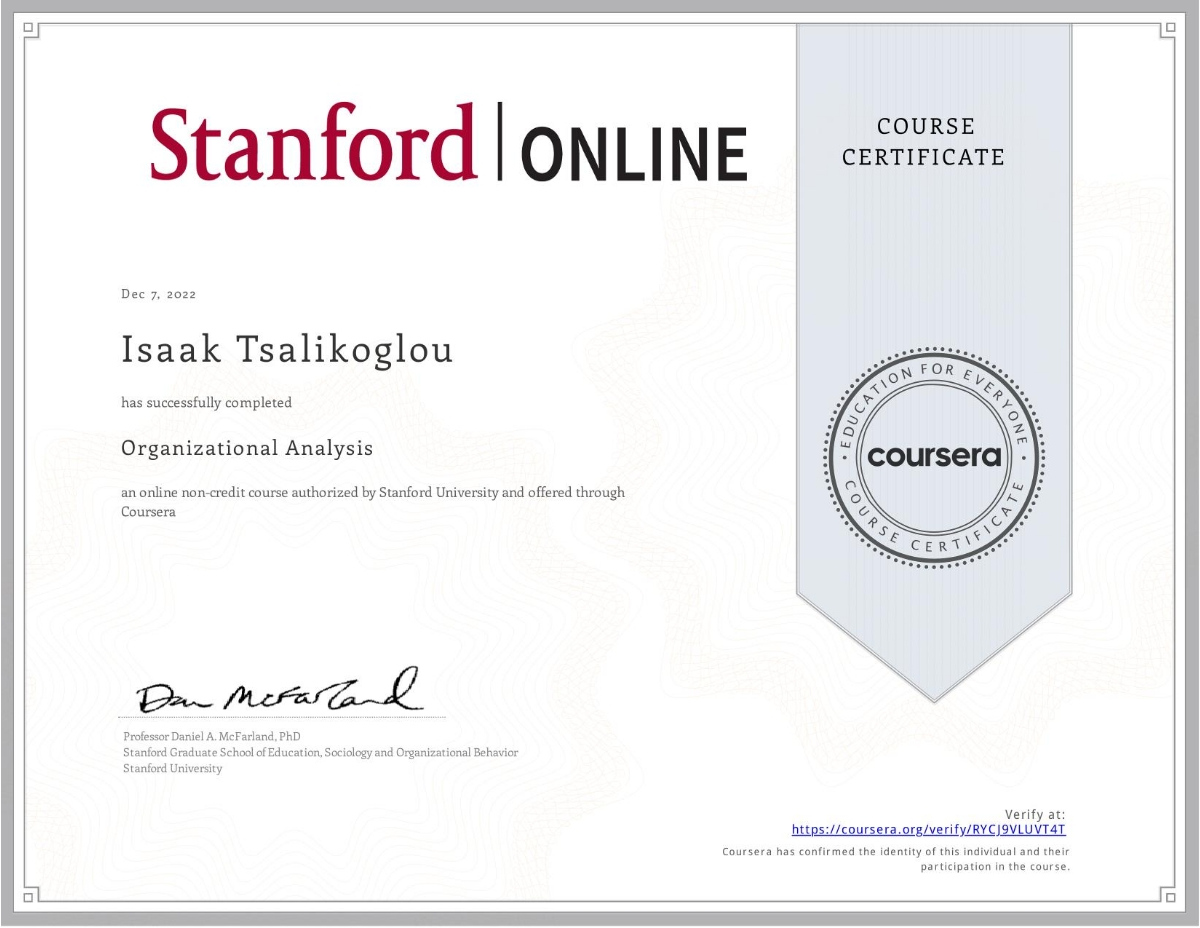
After 11 weeks of self-paced learning, I completed Stanford Online’s Coursera course on “Organizational Analysis” . Here’s my review.
The models
I like the idea of using various models as lenses through which to look at organizations, networks and situations. No model is a silver bullet and the instructor takes care to present each model’s shortcomings and critique. Kudos for that!
The videos
The videos are well made, though the instructor is mostly reading from the provided course PDF, which I eventually found more helpful than watching or listening to the videos, also because it’s more visually organized and structured than the slides shown on the videos.
The case studies
The case studies presented are of mediocre relevance, as they are far removed from most people’s experiences (e.g., Cuban Missile Crisis), too education-focused, or too USA-centric in terms of social issues. The instructor sometimes uses situations he faces in an academic environment as a professor, which is not interesting for people not currently dealing with or considering employment in the bureaucratic maze of a large academic institution.
The quizzes
The weekly quiz utilizes most questions presented during the weekly videos, though it’s possible to answer them by studying the PDF. Some questions test attentiveness to minutiae or present “gotcha!” moments, rather than verify understanding, which feels gimmicky and sub-par for the education brand behind the course.
The final quiz is an exercise in memorization and in reviewing the PDF, as there is simply too much nitty-gritty material covered in the course to remember it all without reference. I applaud the fortitude and memorization skills of everyone who got close to 100% on it. I didn’t, but I’m perfectly happy with having the excellent PDF as a handy reference in the future.
Recommendations
For those wanting to dive deeper, I strongly recommend the Screen-Side Chat videos (virtual Q&A session based on input from course participants in a classroom setting), some of which are insightful and complement the rather dry course content with sensible clarifications for real-life situations and “what if” scenarios.
Conclusion
Overall, this is a very well-made online course that was a good use of my time. It was significantly more dry and academic than prior real-life courses I’ve taken, but It provided many “aha moments” related to my experience with change and improvement initiatives, organizational development, and organizations that parrot/monkey each other in an industry (a phenomenon apparently called “institutional isomorphism”).




